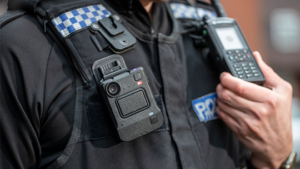You can’t put an exact figure on how far most two-way radios can receive and transmit communications. This is because there are multiple factors influencing range at any given time, from elevation, to interferences, obstacles and environmental conditions. Here are some considerations to help you maximise your coverage and get the most out of your two-way radio system:
Terrain
Some terrains will give you better range than others. For example, radios used on an elevated, flat surface with no obstacles to interfere with will have far better coverage than an area surrounded by valleys, hills, trees and buildings. The best way to ensure you don’t suffer from intermittent reception or trouble communicating is to buy or hire the right equipment in the first place. Two-way radio systems are highly adaptive and can be tailored to function differently in a range of distances and environments. This is why it’s important to do your research and pick a system that meets the needs of your organisation.
Radio Power
An important factor impacting your level of coverage is the power output of the radio. Power levels range from 1 to 5 Watt, affecting your range immensely. The higher the wattage of a portable radio, the more distance it can successfully transmit. Radio signals operate on wavelengths and lose signal along the way. By increasing the power of your radio, you can make the signal go further. When choosing a radio, it’s important to ensure the power level is able to support the amount of range you’ll need.
Signal type
Different frequency signals, such as VHF and UHF, have pros and cons, reacting to materials in different ways. For example, lower frequency signals tend to travel further than higher frequency signals, but high frequency signals tend to be better at penetrating objects. As a general rule, VHF signals are best used outside in a clear line-of-site, while UHF might be best suited around urban areas. It’s essential to speak to a professional to determine exactly what you need in order to find a solution for your needs.
Digital vs. Analog
Analog is an older, less advanced two-way radio technology. Digital radios provide up to 20% more coverage than analog units, giving them greater range. As the user drops out of coverage, digital radios continue transmitting voice, utilising that extra 20% of perceptible coverage. Alternatively, analog radios will either lose the transmission or receive white noise. At Digicom, we offer a large range of digital capable radios, which will allow you to get that extra bit of coverage that you can’t obtain with analog.
Having the right communications solution will make your life much easier, saving you money and making your organisation more productive. With over 50 years’ combined experience in two-way radio technologies, Digicom Wireless provides expert recommendations, helping you design a custom two-way radio solution that meets the requirements of your organisation. We also take care of all your maintenance, while ensuring your transition to the equipment is as quick and seamless as possible. For more information on our products, support or maintenance, contact us on 1300 398 221 or via our enquiry form.






